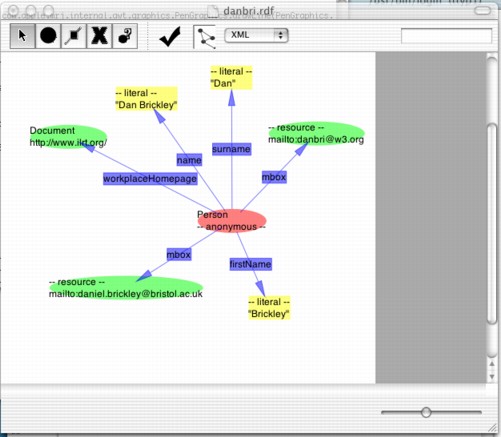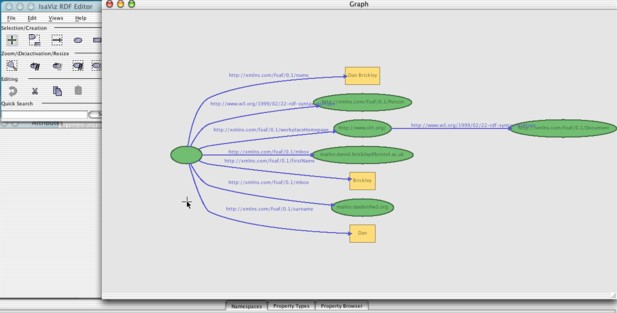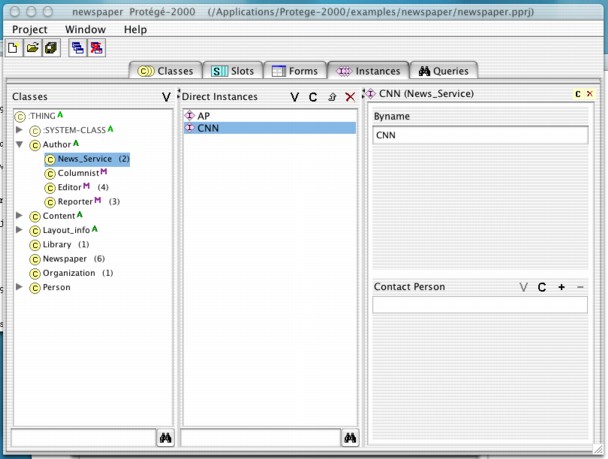

This document is a brief review of current RDF instance data creation tools, specifically with relation to their usefulness for creation MEG Registry application profiles.

I should begin be stating that I am the author of this software.
RDFAuthor is a simple tool for viewing, creating and querying RDF instance data. It is written in Java, but uses Mac OS X for the interface (i.e. Mac only) RDFAuthor presents data graphically as a directed graph: that is, a graphical representation of the RDF data model. Information can be dragged in from sources such as web browsers. It also has a window which imports schemas from the web. The schema classes and properties can then be used in the model.
RDFAuthor can also 'query by example': graphs can be constructed and matched against remote data stores.
Although RDFAuthor can be used to create any rdf data it is certainly not suitable for the registry client. This would require users have a knowledge of the registry data model, something which seems unreasonable.

Like RDFAuthor IsaViz is a general purpose graphical RDF authoring tool. IsaViz is written in Java using JFC for the interface. This essentially means that it is cross platform (although it also needs GraphViz which restricts it somewhat).
Much of what has be said about RDFAuthor is true for IsaViz. It presents a graphical view of the rdf model, which can be edited. It is less useful for authoring, but can display larger models. It has no query capability.
As for its potential as a registry client, the same conclusions hold for IsaViz: it can be used, but would demand too much of users.

Protege, like IsaViz, is a Java JFC tool, and so runs on most platforms. However it is quite different from the previous two applications. Protege's operation can be (broadly) be divided into three areas:
One of the most interesting features of Protege is that is can create a graphical user interface from the ontology. That is, it can create forms with fields corresponding to elements in the ontology, and validate user input.
With respect to a MEG Registry client Protege could be used to create profiles, element sets, and (with difficulty) encoding schemes. However encouraging reuse appears to be very difficult without significantly altering the application.
More importantly Protege is too powerful for the relatively restricted requirements of the registry client. The broad scope of Protege's function is what suggests it could work as a client, but this generality would remain, and would be unnecessarily confusing for users.
As far as I can see all of these tools could be used to create application profiles. This does not mean that they should be used. All are general purpose tools which would require more detail than users should need simply to create registry data.